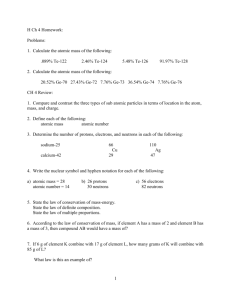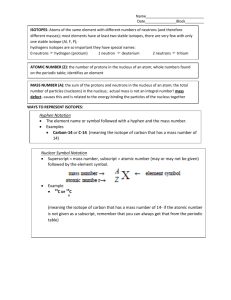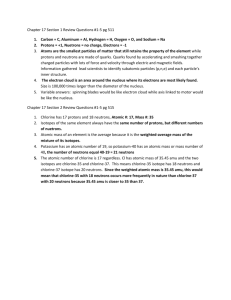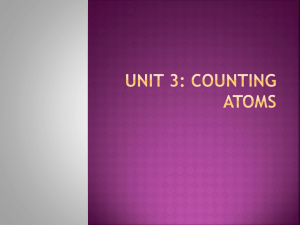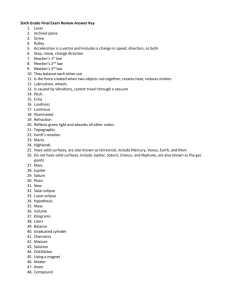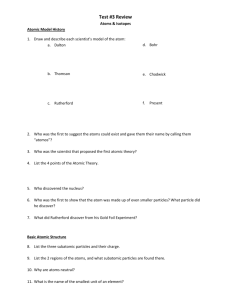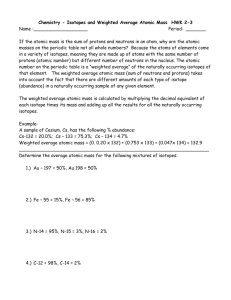H Ch 4 Homework Key
advertisement
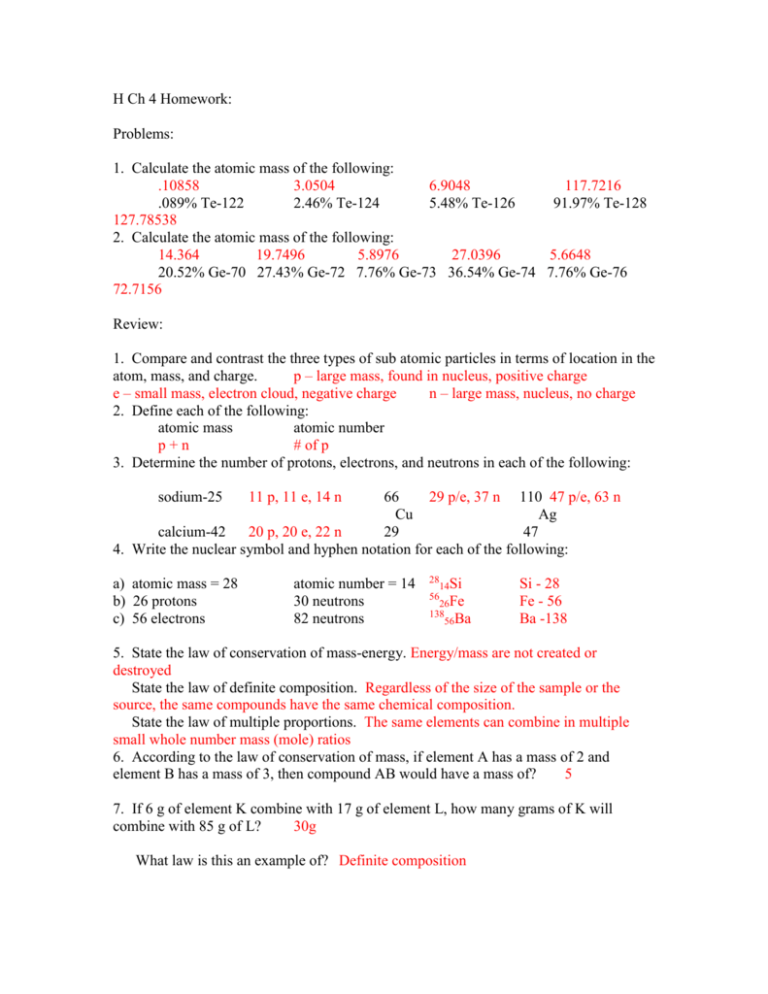
H Ch 4 Homework: Problems: 1. Calculate the atomic mass of the following: .10858 3.0504 6.9048 117.7216 .089% Te-122 2.46% Te-124 5.48% Te-126 91.97% Te-128 127.78538 2. Calculate the atomic mass of the following: 14.364 19.7496 5.8976 27.0396 5.6648 20.52% Ge-70 27.43% Ge-72 7.76% Ge-73 36.54% Ge-74 7.76% Ge-76 72.7156 Review: 1. Compare and contrast the three types of sub atomic particles in terms of location in the atom, mass, and charge. p – large mass, found in nucleus, positive charge e – small mass, electron cloud, negative charge n – large mass, nucleus, no charge 2. Define each of the following: atomic mass atomic number p+n # of p 3. Determine the number of protons, electrons, and neutrons in each of the following: sodium-25 66 29 p/e, 37 n 110 47 p/e, 63 n Cu Ag calcium-42 20 p, 20 e, 22 n 29 47 4. Write the nuclear symbol and hyphen notation for each of the following: a) atomic mass = 28 b) 26 protons c) 56 electrons 11 p, 11 e, 14 n atomic number = 14 30 neutrons 82 neutrons 28 14Si 56 26Fe 138 56Ba Si - 28 Fe - 56 Ba -138 5. State the law of conservation of mass-energy. Energy/mass are not created or destroyed State the law of definite composition. Regardless of the size of the sample or the source, the same compounds have the same chemical composition. State the law of multiple proportions. The same elements can combine in multiple small whole number mass (mole) ratios 6. According to the law of conservation of mass, if element A has a mass of 2 and element B has a mass of 3, then compound AB would have a mass of? 5 7. If 6 g of element K combine with 17 g of element L, how many grams of K will combine with 85 g of L? 30g What law is this an example of? Definite composition 8. If 60 g of X combine with 10 g of Y to form the compound XY, how many grams of Y will be needed to combine with the same amount of X to form the compound XY2? 20g What law is this an example of? Multiple proportions 9. What one factor determines the identity of an atom. 10. What are isotopes? # of protons Same element with a different mass 11. How are the isotopes of a particular element alike? How are they different? Same number of protons. Different number of neutrons. 12. Explain how the electron was discovered. Cathode ray tube… 13. Explain Rutherford’s experiment that led to the discovery of the nucleus. Gold foil experiment…

